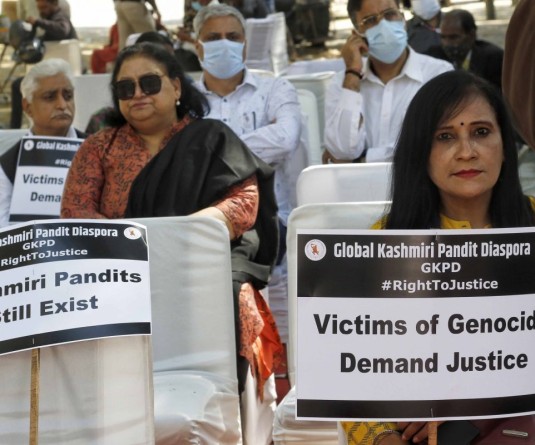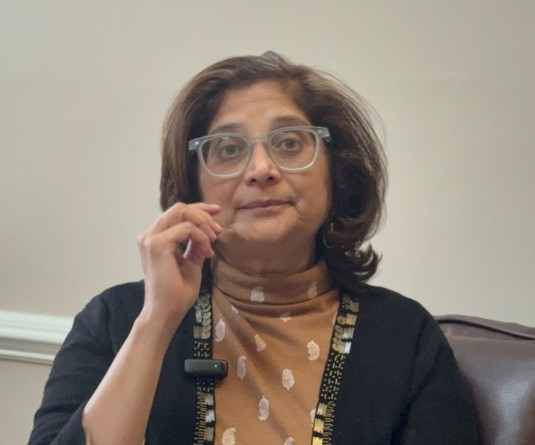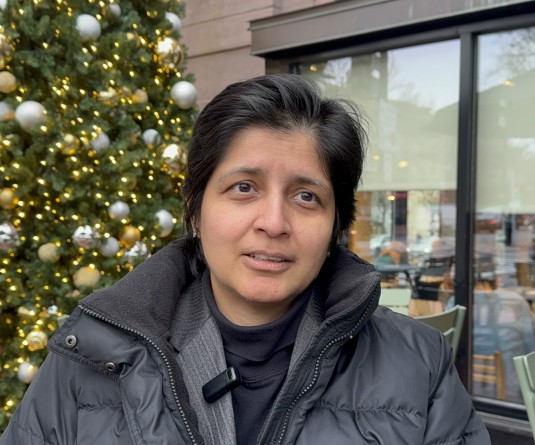Women march in during the closing ceremony of the National Inquiry into Missing and Murdered Indigenous Women and Girls in Gatineau, Quebec, Canada, June 3, 2019. REUTERS/Chris Wattie
The government inquiry into murdered and missing indigenous women blamed racism, colonialism, sexism, and apathy in Canadian society
TORONTO, June 4 (Thomson Reuters Foundation) - A year ago, Canada announced that the disappearance and murder of thousands of indigenous women amounted to genocide, raising hopes authorities would act to address the historic tragedy.
Now the government says a plan of action is delayed due to the coronavirus pandemic, a development that survivors and advocates say is a weak excuse for failing to address the issue.
"I'm disappointed because it just seems like, even before COVID-19 as well, everything is at a standstill," said Roxana Wilson, an indigenous mother whose 6-year-old daughter Adriane Cecile was raped and murdered 31 years ago.
Wilson said she still wakes up at night screaming and crying. "When she died, we all died," she said.
The government inquiry into murdered and missing indigenous women released on June 3, 2019 blamed the violence on long-standing racism, colonialism and sexism, along with apathy in Canadian society.
It proposed more than 200 wide-ranging recommendations, from implementation of a national action plan and a human rights tribunal to establishing a guaranteed annual livable income for all Canadians.
Participants were expecting an action plan to be released on the report's first anniversary, but Ottawa announced last week that the plan would be delayed, citing the COVID-19 pandemic. It did not name a new deadline.
The sweeping 1,200-page report found indigenous women were 12 times more likely to die from violence or go missing than non-indigenous women.
Estimates suggested some 4,000 women have been killed or disappeared over the past few decades, and many cases have gone unsolved.
The government is using COVID-19 as an "excuse," and families are "tired of words," said Lorraine Whitman, president of the Native Women's Association of Canada (NWAC).
"The government has truly failed the people," she told the Thomson Reuters Foundation.
The NWAC released a score card on Wednesday on the government's action, saying it had done "so little" that "progress was impossible to score."
The Ministry of Crown-Indigenous Relations said in an email that it had been "working to address systemic issues highlighted throughout the report," including indigenous child welfare reforms, the protection of indigenous languages and tougher domestic assault laws.
Indigenous women's groups say domestic violence has been made worse by COVID-19, and a survey by the NWAC found nearly one in five indigenous women had been victims of violence in the past three months.
Indigenous women are more afraid of isolation than COVID-19, said Barbara Ward-Burkitt, director of the Prince George Native Friendship Centre in British Columbia.
"The pandemic is an unknown to them," she said. "The violence at the hands of their abusers is something that they do know."
Violence against indigenous women and girls "has been part of the very fabric of this country since before it was a country," said Sarah Robinson, who advises organizations on indigenous affairs in British Columbia.
Its complex causes date back to colonial settlement, she said, when legislation marginalized indigenous women.
The NWAC submitted steps to the government which it says could form the basis of a national plan, including a taskforce of investigators to review unresolved cases and a commitment to establish a national database.
Wilson, from Fort Rupert, British Columbia, said she wants the government to show it cares about victims like her daughter, whose beauty she compared to that of a butterfly.
"When she danced or even when she walked in a room, it was like she floated," she said.






